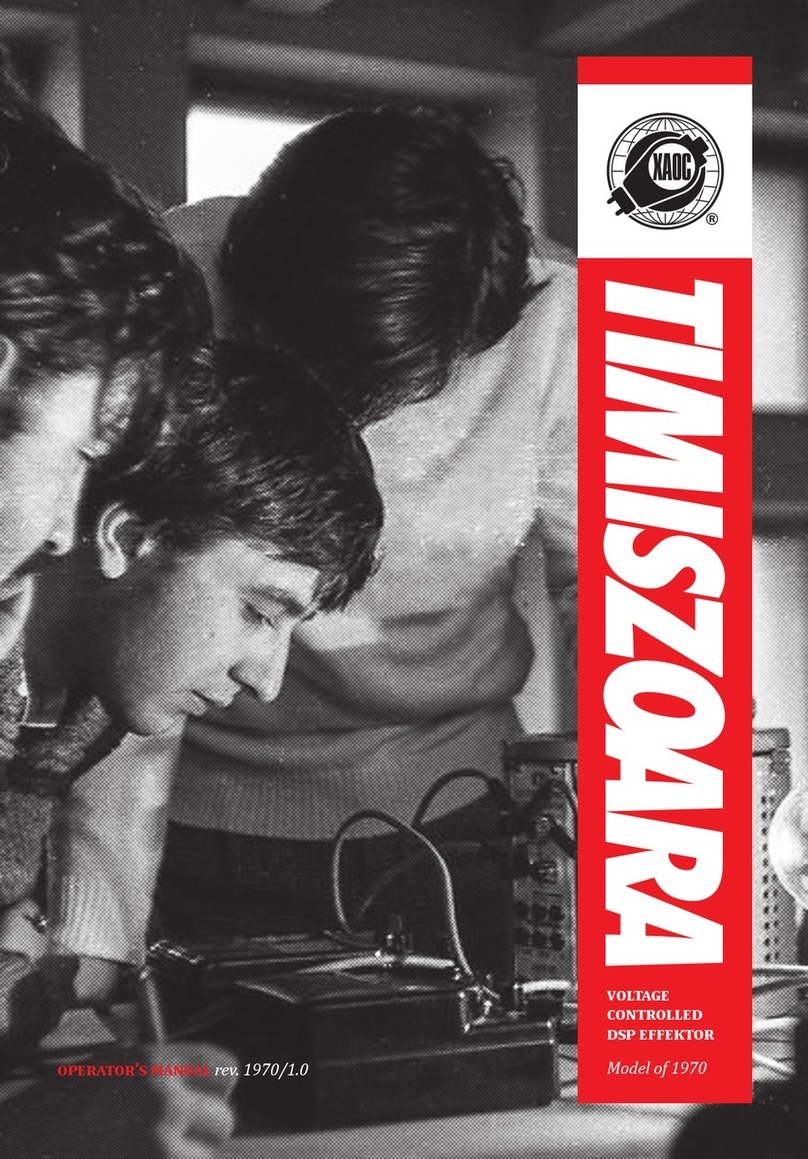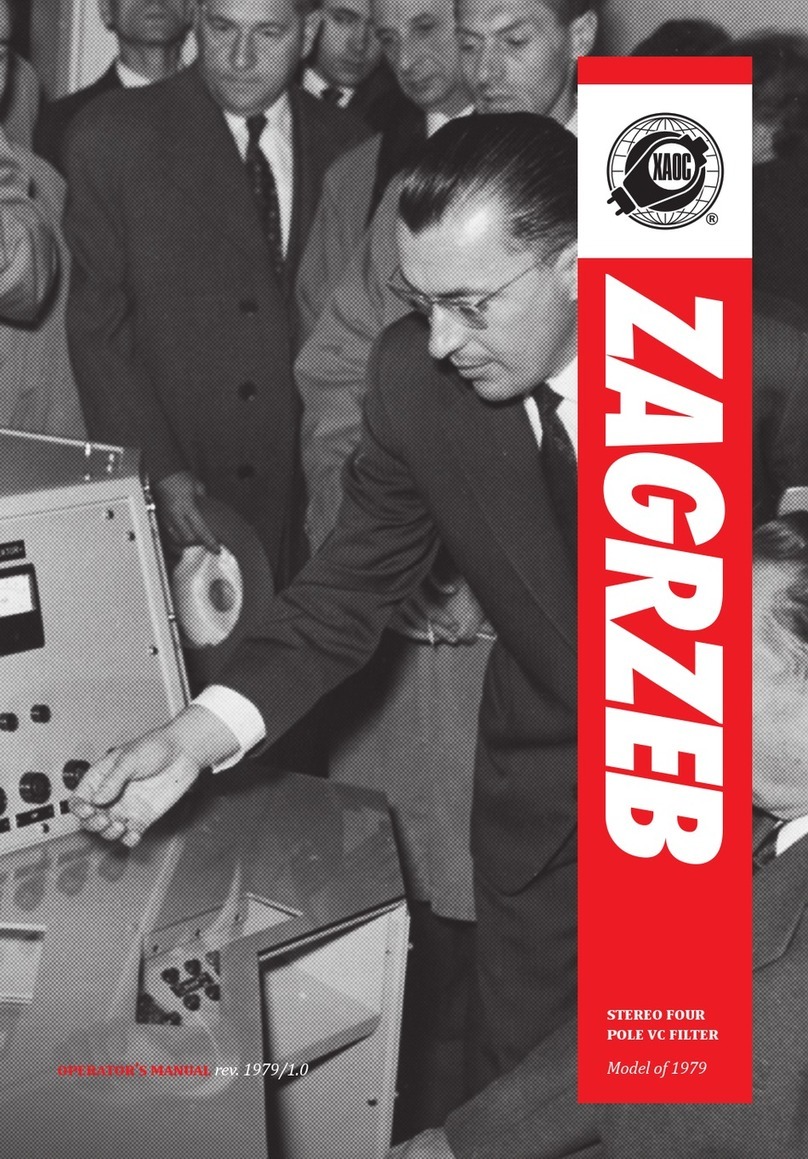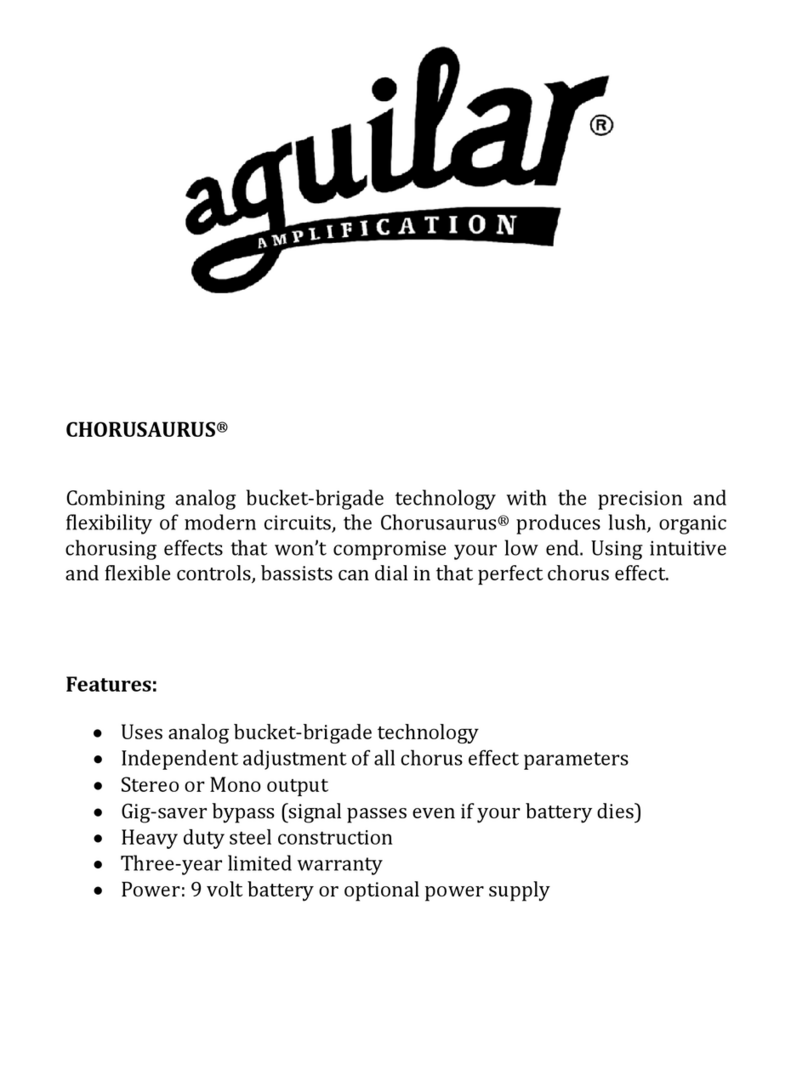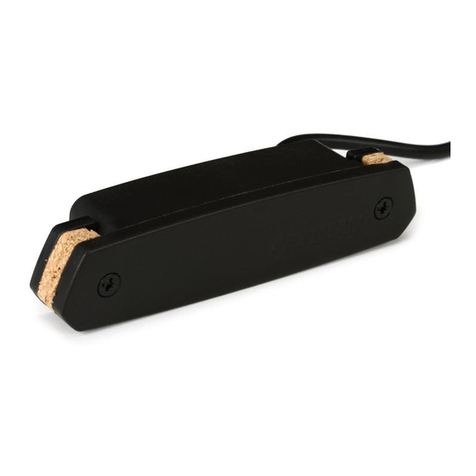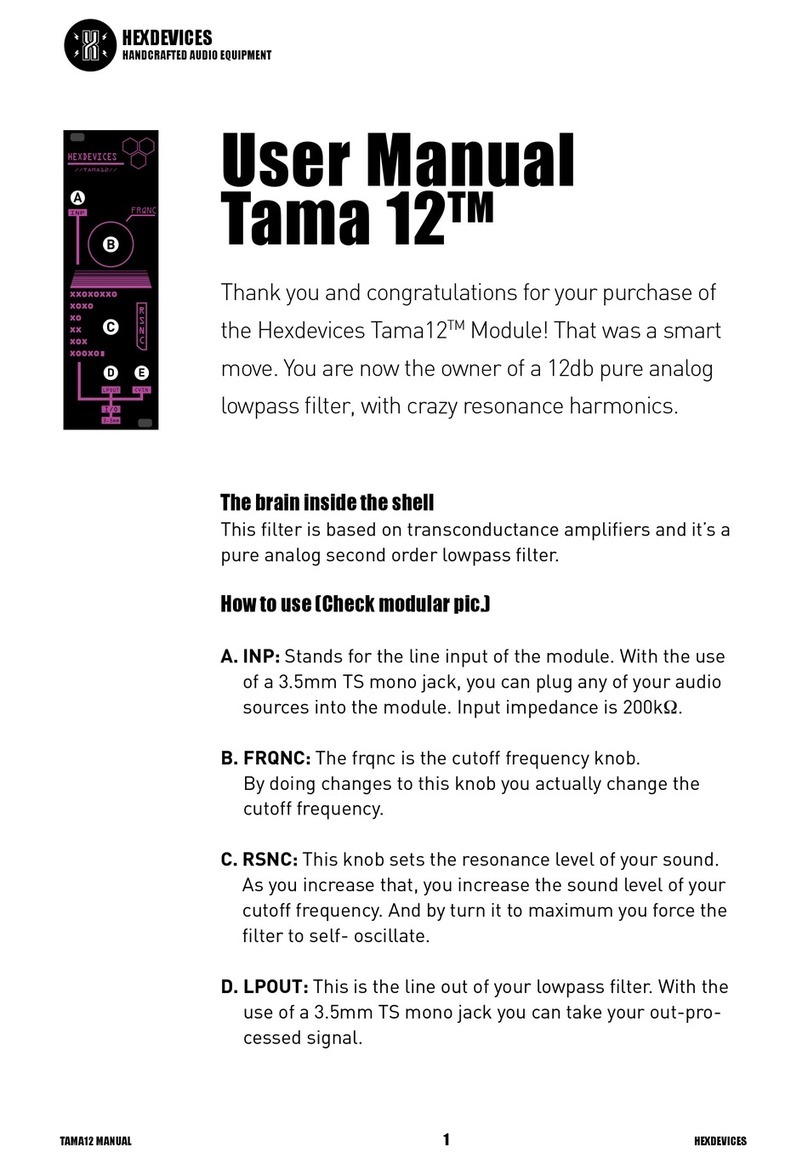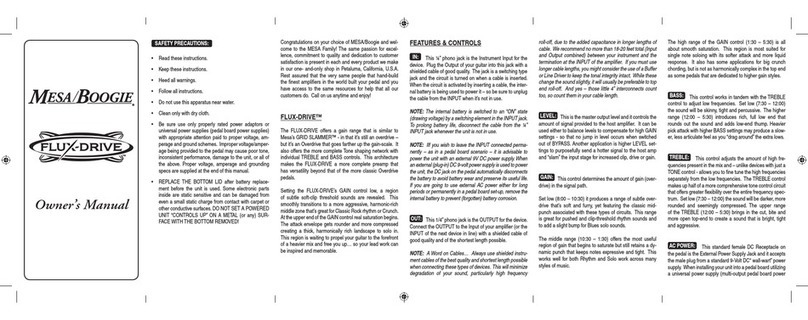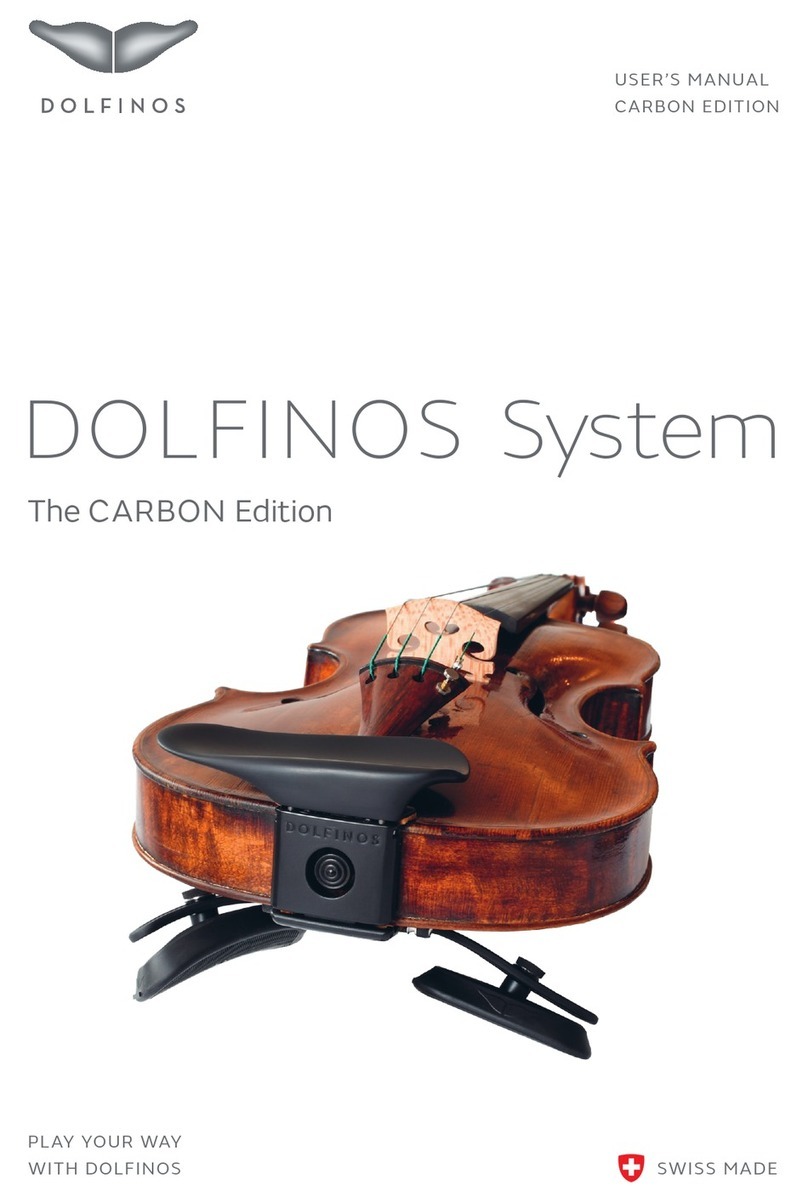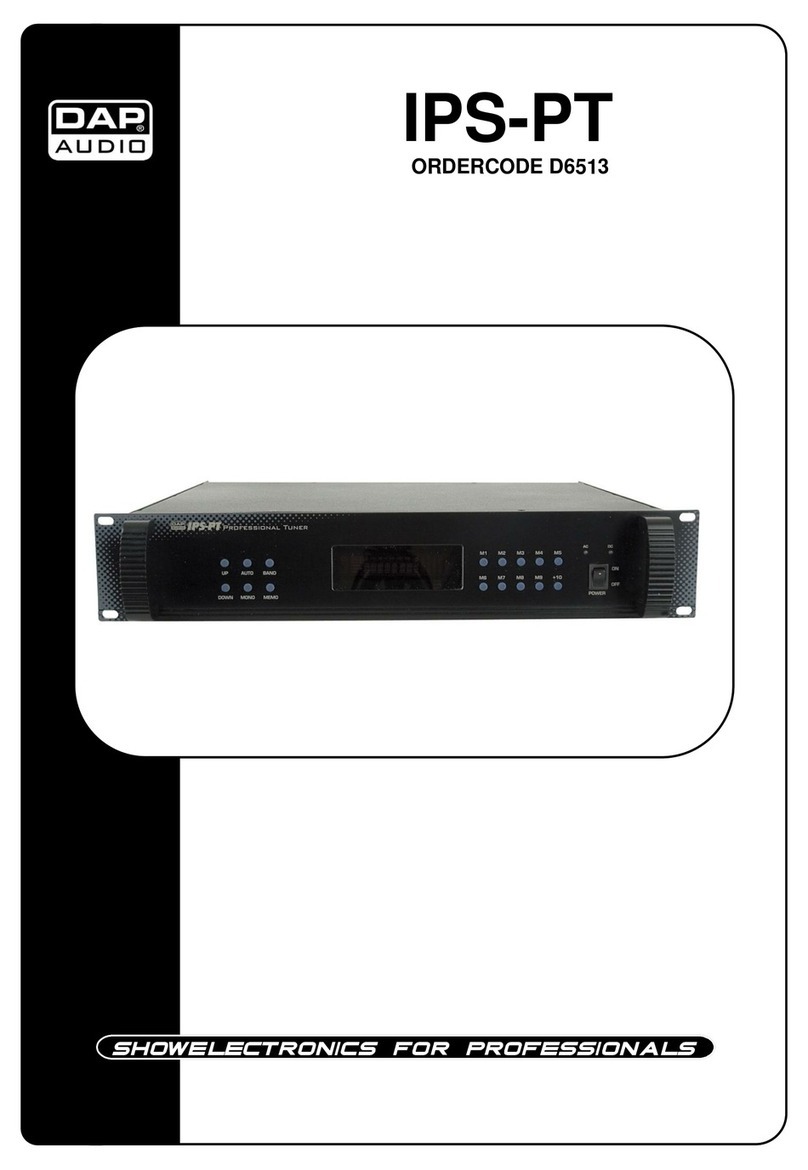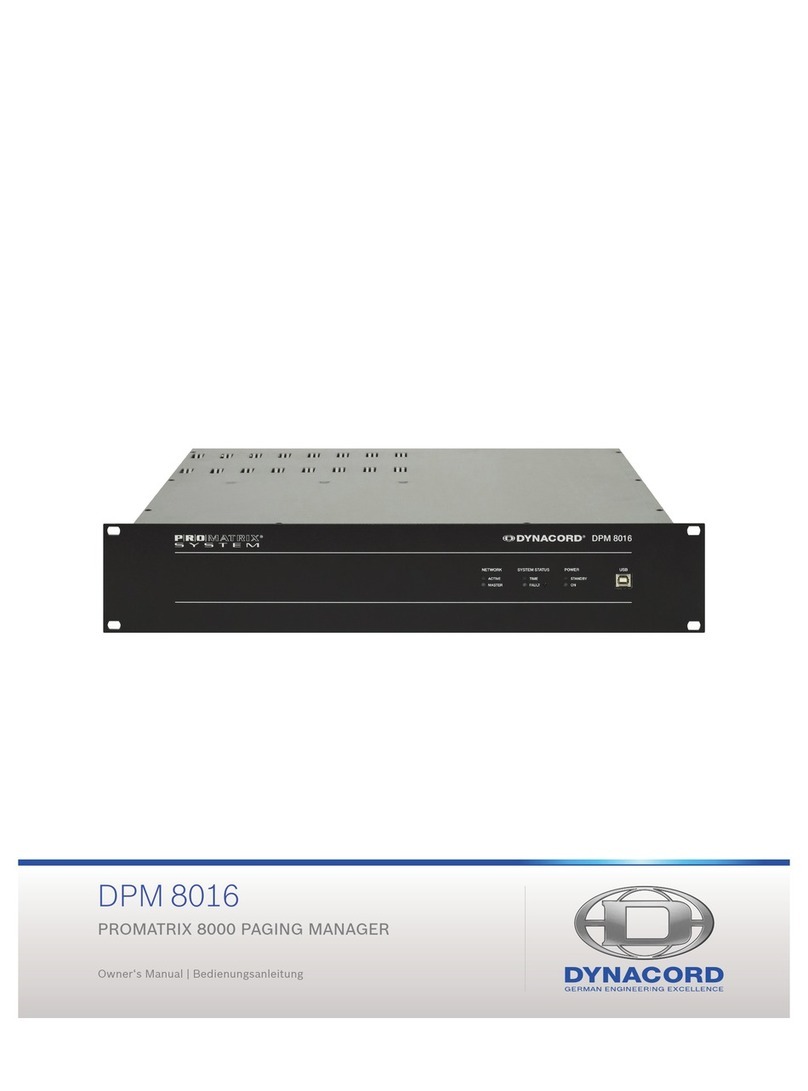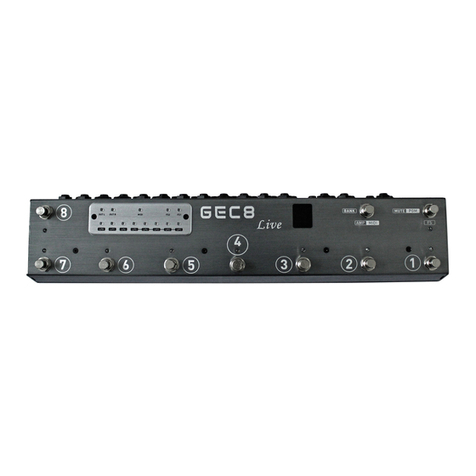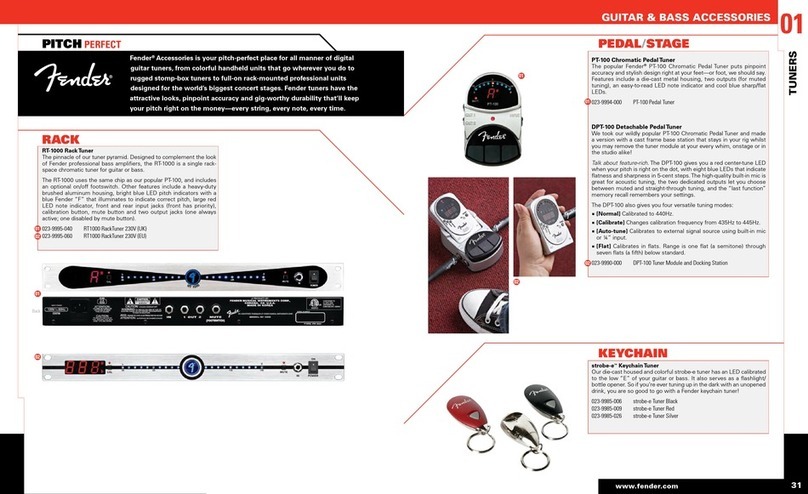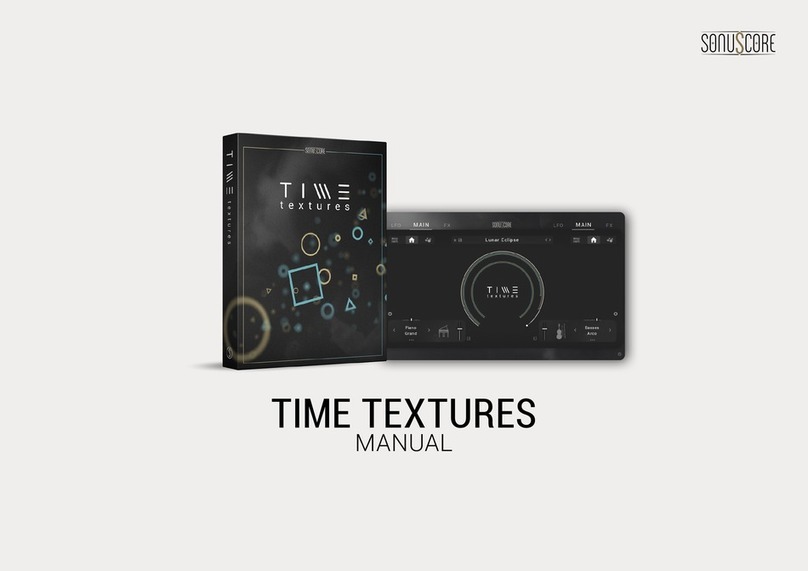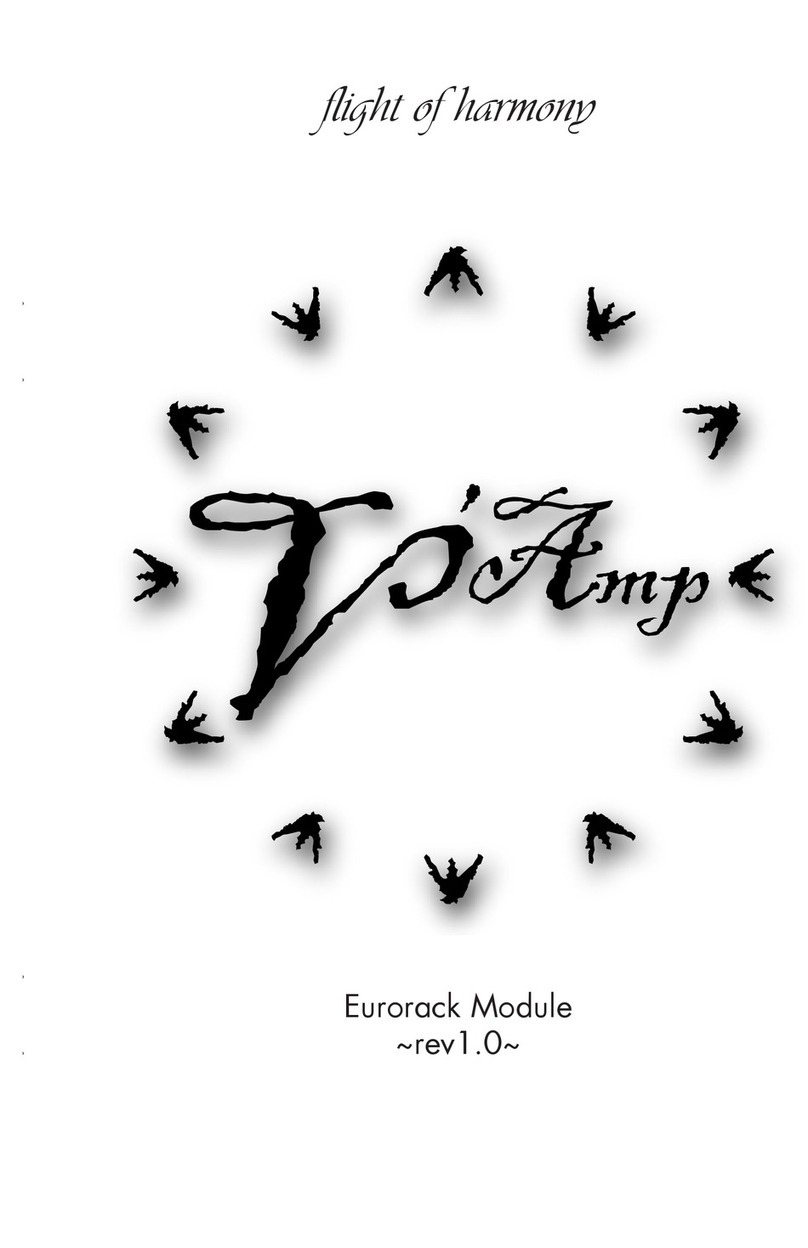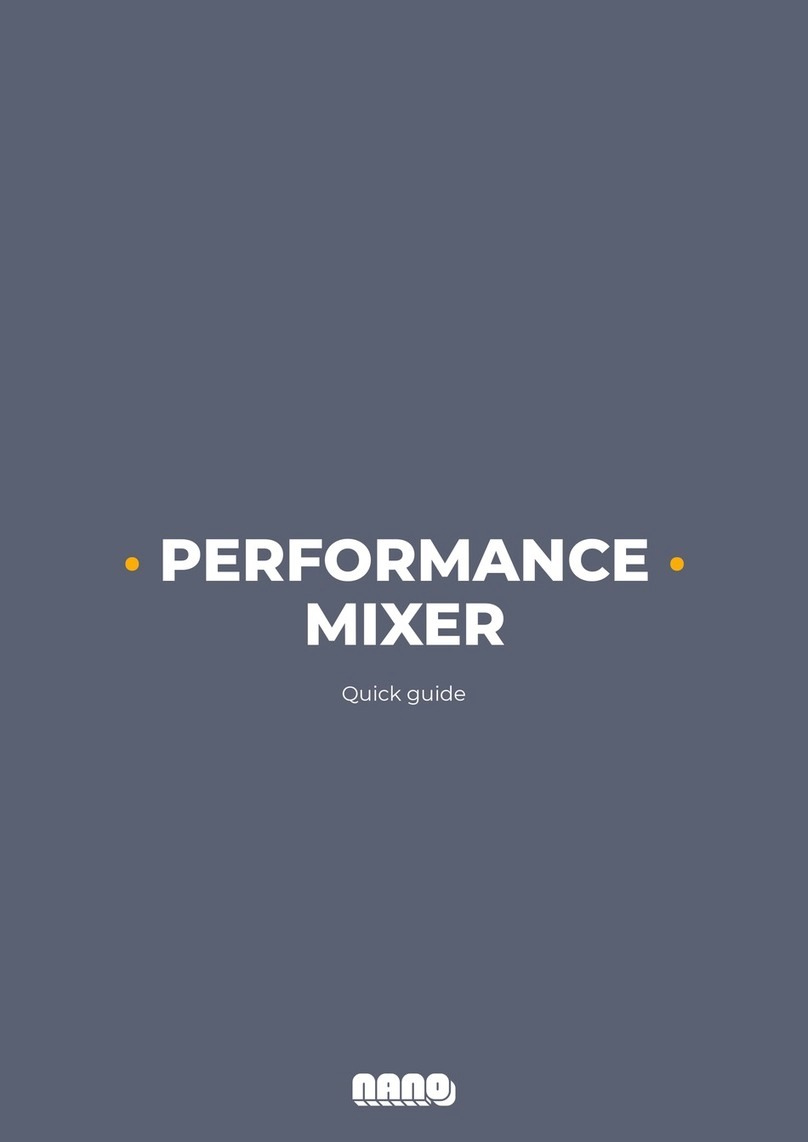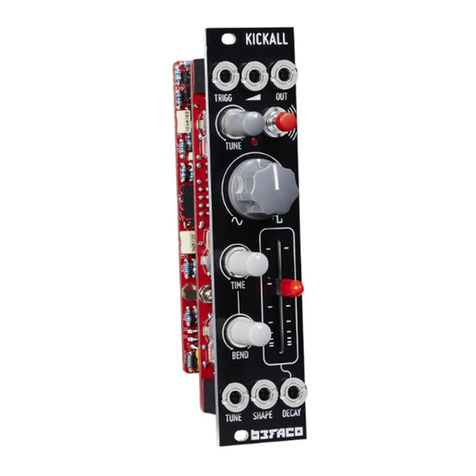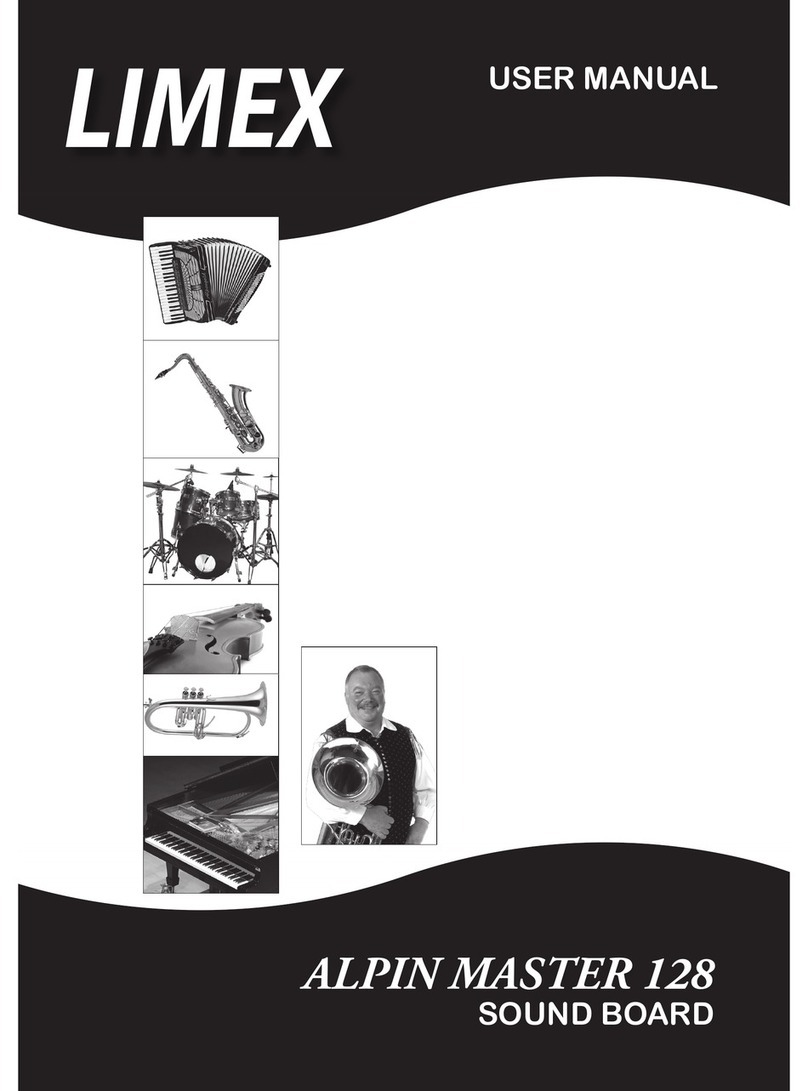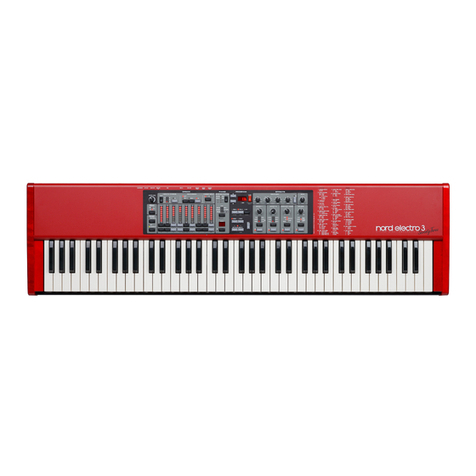
case. Again, pay attention to the markings on
the boards and always connect the ribbon ca-
ble so that the red stripe matches the dot mark
on the board. For technical reasons, these dot
marks may not always face down. be care-
ful, as wrong connections may damage
the delicate digital circuits! All units
should be fastened by mounting the supplied
screws before powering up.
MODULE OVERVIEW
The main purpose of Jena is to map incoming
digital data to some other digital data through
a transfer function selected from its waveform
shape bank. For example, Jena may be con-
nected in a loopback to a Drezno module so
as to transform input analog waveforms to
some other output analog waveforms via the
ADC and DAC sections in Drezno. Jena allows
one to waveshape signals through the classic
table look-up technique: input 8-bit values are
treated as arguments of a function stored in
memory and values read from successive loca-
1). You can also feed a simple sawtooth or a tri-
angle wave from your VCO and it will be trans-
formed into variety of waveshapes (from 11
wavetable banks) with the additional option
of through-zero (DX-style) phase modulation.
The shape of the wave may be also morphed
with the panel knob and/or external CV.
Individual bit outputs on Jena may also be
used to produce interesting signals. There is a
dedicated bank of Walsh functions that can be
used for an unusual twist on additive synthe-
sis. Also, transforming slow waveforms to se-
quences of binary signals using the individual
bit outputs is a great way to create rhythmic
drum patterns. Jena comes with a special bank
of 256 modern drum loops split to individual
voice triggers.
controls as well as a 1+3 digit LED display.
During normal operation, the display shows
the currently selected bank of shapes or func-
tions 1 as well as the current shape number
within the bank 2. Additional information
is displayed during operating mode selection.
The endless rotary encoder below the display
3 allows for manual selection of the current
bank or shape. A short press on the encoder
switches between the bank and shape layer. A
small dot on the display indicates which layer
is currently selected for editing. Both the bank
number and shape/function number may be
additionally controlled via the corresponding
bank 4 and shape 5 CV inputs that accept
-5V to +10V. The voltage values add to the panel
selection. The second knob, phase 6 , sets the
initial phase of the waveform which can also be
modulated by external CV via the phase jack
7. The range of modulation is -5V to 5V which
corresponds to the phase change of four full cy-
cles. The blue link button 8 controls whether
the processed input data in Jena is passed to its
Leibniz output (the ribbon cable connected at
the back). When unlinked, the incoming data
is passed through unaffected. Regardless of the
status of the link button, the processed data is
always available from eight bit outputs jacks
9 in the form of eight binary gate (5V) signals
corresponding to individual bits (as with the
other Leibniz modules). The cluster of yellow
LEDs 10 indicates the bit outputs' activity.
The central red LED 11 indicates whether Jena
is operating in the asynchronous (waveshaper)
or synchronous (oscillator) regime.
CLOCKING AND SYNCHRONOUS/
ASYNCHRONOUS OPERATION
The incoming data is delivered to Jena through
the Leibniz interface which transmits all bits
alongside the data clock. For example, if you
connect Jena to Drezno, samples will be trans-
3


